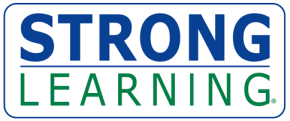Q&A Studyskills
Dear Dr. Linda,
I know you’ve written about this numerous times, but please do one more column on study skills! My kids are in 8th and 11th grade. Once again they’re bringing home not such great grades. I know they’re not rocket scientists but they do try and the grades don’t reflect the time they’re putting in. I’m convinced they’d do better if they knew how to study. I think many parents would appreciate another column on study skills. Thanks, Cindy
Dear Cindy,
I’m sure you’re right. Many kids put in a lot of time studying and yet don’t get very good grades. These students don’t know how to review what they’ve learned so the information transfers into their long-term memory. Effective strategies and techniques for doing this process are called “Study Skills.”
The following techniques, taken from my previous columns about study skills, will help improve your children’s study skills. With improved study skills, they’ll get better grades at any grade level, including college.
1. Understand what’s being taught. So much time and energy is wasted because students don’t understand the vocabulary or the concepts to which teachers refer. Teachers presume that students have the same common reference points or experiences they have. Unfortunately, often kids don’t know the words or the references.
2. Chunk. It’s easier to memorize information by breaking it into small chunks. It’s called “chunking.” Students and their parents may not realize it, but they use chunking all the time. For example, telephone numbers, zip codes, and social security numbers are chunked. You’ve probably noticed that the numbers are grouped together, usually in threes, fours, or fives.
3. Create graphic organizers. Pictures and graphics make information easier to understand. For example, Venn diagrams are commonly used to help students sort information by using two intersecting circles. Most children have used these when writing compare and contrast papers in English class. Other kids prefer mind maps which can be drawn in color. Color helps us remember. Mind maps can be pictures or words, whatever helps the student the most.
4. Use acronyms. An acronym is a word made up from the first letters of a list of words. For example, to remember the names of the Great Lakes, just remember “HOMES.” H=Huron, O=Ontario, M=Michigan, E=Erie, S=Superior.
5. Use associations. Connect or associate a word or concept with a person, place, thing, feeling, or situation. For example, the word altruistic means giving or unselfish. Now associate altruistic with someone you know who is generous. For example, kids often think of a relative who is generous on their birthday.
6. Follow your learning style. Auditory learners take in information best by hearing. Visual learners remember and understand best by seeing what they’re learning. Kinetic/tactile learners need to touch or manipulate to help them learn. Multi-sensory learners are kids who learn best using two or more senses at the same time.
7. Use rhyming. Do you remember, “I before E, except after C, or when it sounds like “A” as in neighbor and weigh”? Or “Thirty days has September, April, June and November”? Make up a silly poem to help you remember.
8. Talk. Tell somebody about the information you have to learn. Discuss the topic with a parent, a grandparent or a friend. Have an argument with someone about the subject. Believe it or not, evening telling your dog or talking to yourself in a mirror helps.
9. Write sentences. Do you remember learning the silly sentence “Every good boy deserves fudge” in music class? It worked! Millions of us still remember the notes. Making a sentence using the first letters of what you want to remember is a technique that can be used for any subject.
These easy-to-use study skills strategies help not only kids who want better grades, but also parents who have something they need to remember.
Dr. Linda
P.S, Your kids can find more study skill tips in my complimentary How to Study ebook. They can download it at http://store.stronglearning.com/free-study-tips
